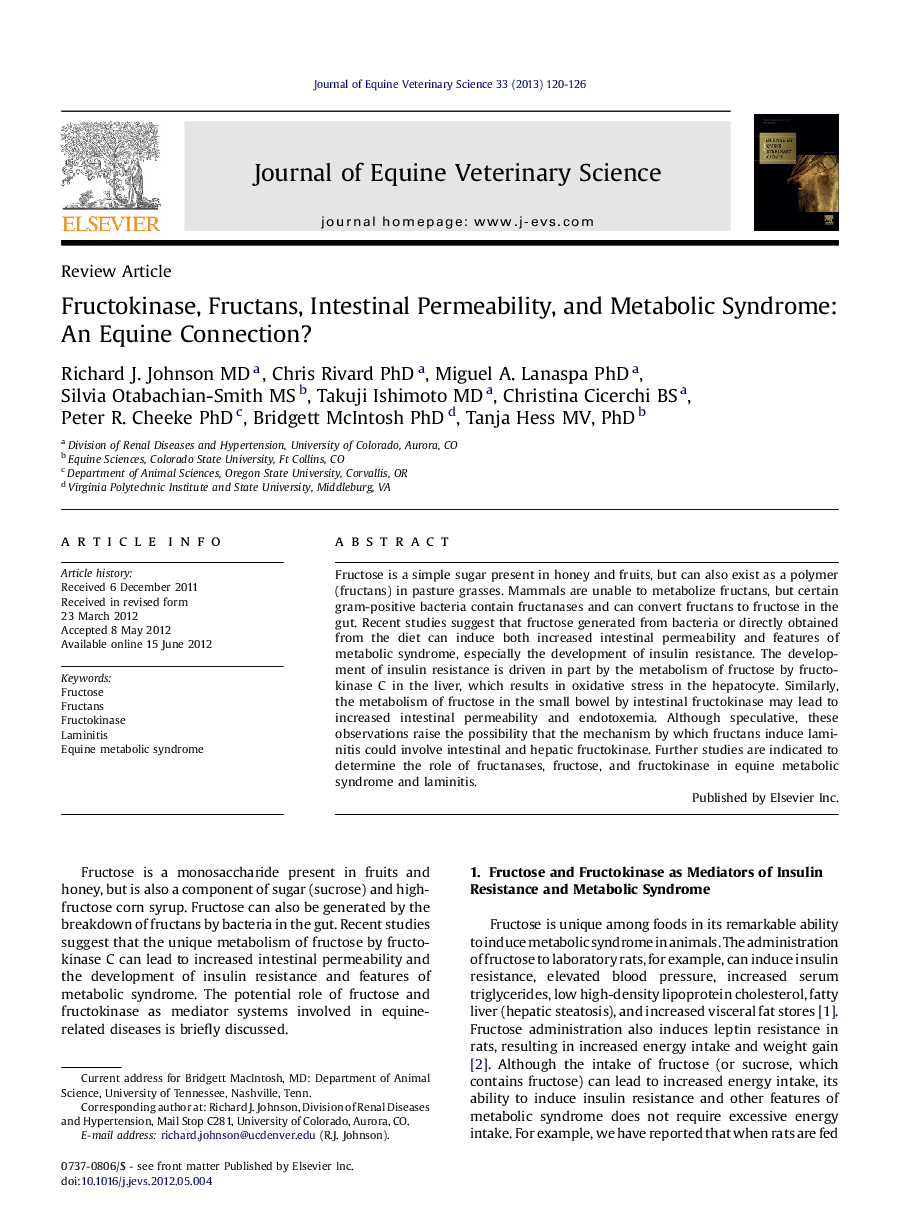| Article ID | Journal | Published Year | Pages | File Type |
|---|---|---|---|---|
| 2395071 | Journal of Equine Veterinary Science | 2013 | 7 Pages |
Fructose is a simple sugar present in honey and fruits, but can also exist as a polymer (fructans) in pasture grasses. Mammals are unable to metabolize fructans, but certain gram-positive bacteria contain fructanases and can convert fructans to fructose in the gut. Recent studies suggest that fructose generated from bacteria or directly obtained from the diet can induce both increased intestinal permeability and features of metabolic syndrome, especially the development of insulin resistance. The development of insulin resistance is driven in part by the metabolism of fructose by fructokinase C in the liver, which results in oxidative stress in the hepatocyte. Similarly, the metabolism of fructose in the small bowel by intestinal fructokinase may lead to increased intestinal permeability and endotoxemia. Although speculative, these observations raise the possibility that the mechanism by which fructans induce laminitis could involve intestinal and hepatic fructokinase. Further studies are indicated to determine the role of fructanases, fructose, and fructokinase in equine metabolic syndrome and laminitis.
